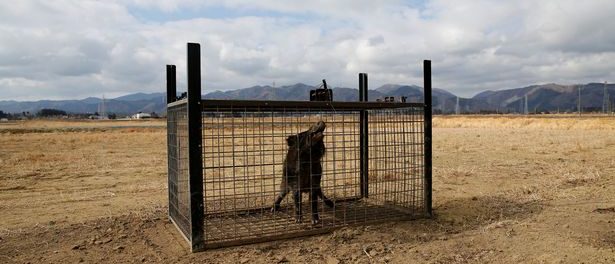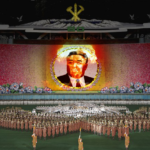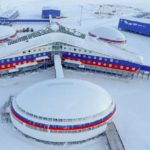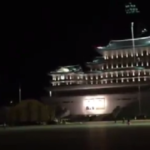Radioactive Wild Boars Roaming Fukushima’s Nuclear Wastelands

Radioactive super aggressive wild boars have been seen and photographed for the first time roaming the wastelands of the once Fukishima Nuclear disaster areas in Japan.
Images captured as a culling team entered the towns within the exclusion zone set up after the nuclear plant’s reactors went into meltdown after the 2011 earthquake and tsunami. The zone was established after residents were evacuated to a safe distance.
However, hundreds of wild boars from surrounding hills and forests into the deserted town of Namie, foraging for food. Residents are due to return to the town at the end of the month, meaning the animals, which are known to attack people when enraged and need to be removed.
The Fukushima Daiichi nuclear disaster was an energy accident at the Fukushima I Nuclear Power Plant in Fukushima, initiated primarily by the tsunami following the Tōhoku earthquake on 11 March 2011. Immediately after the earthquake, the active reactors automatically shut down their sustained fission reactions. However, the tsunami destroyed the emergency generators that would have provided power to cool the reactors. The insufficient cooling led to three nuclear meltdowns, hydrogen-air chemical explosions, and the release of radioactive material in Units 1, 2 and 3 from 12 March to 15 March. Loss of cooling also caused the pool for storing spent fuel from Reactor 4 to overheat on 15 March due to the decay heat from the fuel rods.
On 5 July 2012, the Fukushima Nuclear Accident Independent Investigation Commission (NAIIC) found that the causes of the accident had been foreseeable, and that the plant operator, Tokyo Electric Power Company (TEPCO), had failed to meet basic safety requirements such as risk assessment, preparing for containing collateral damage, and developing evacuation plans. On 12 October 2012, TEPCO admitted for the first time that it had failed to take necessary measures for fear of inviting lawsuits or protests against its nuclear plants.
The Fukushima disaster is the largest nuclear disaster since the 1986 Chernobyl disaster and the second disaster to be given the Level 7 event classification of the International Nuclear Event Scale.
Though there have been no fatalities linked to radiation due to the accident, the eventual number of cancer deaths, according to the linear no-threshold theory of radiation safety, that will be caused by the accident is expected to be around 130–640 people in the years and decades ahead.







